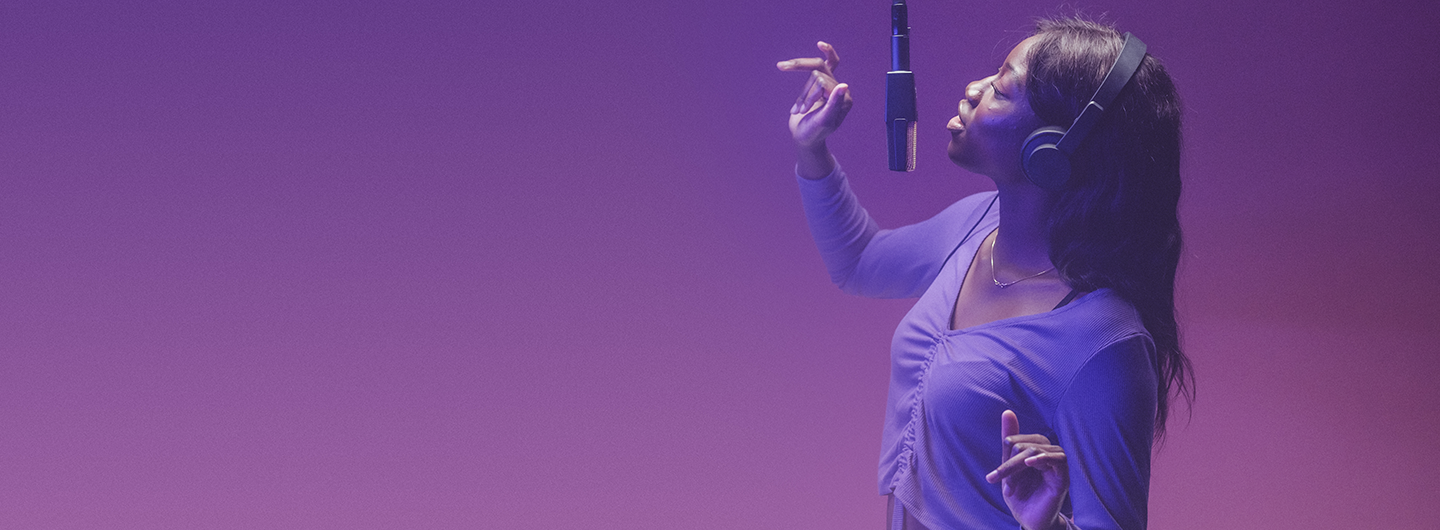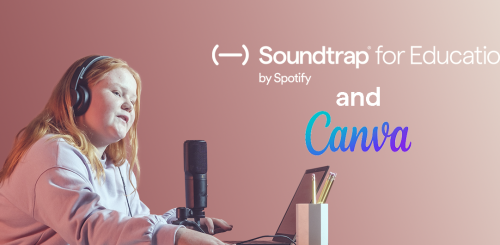
Getting Excited for National Poetry Month 2023 as an Educator
March 21, 2023Every April is National Poetry Month, the perfect time to teach students about poetry’s impact on the modern world. If you’re a music teacher that’s ready to bring poetry into the classroom or an English teacher interested in using pop music to get students excited about writing, we have plenty of exciting activities you can use to boost student engagement during National Poetry Month.
Experimenting with song lyrics and spoken poetry will open your students’ minds to the wonders of poetic devices. Today, we’ll discuss a few ways that you and your students can have a blast on National Poetry Month using music and poetry!
Exploring Music and Poetry for National Poetry Month
Music and poetry have quite a few similarities, so why not explore them with your class on National Poetry Month? This April is a fantastic opportunity for you to explore the profound connection between music and poetry.
Both art forms rely on rhythm, meter, and rhyme to convey the theme. Furthermore, music and poetry allow a reader or listener to understand deeper truths about themselves through the expression of others. However, the similarities don’t stop there. In fact, the two art forms have quite a few things in common, including the following.
Music and Poetry are Forms of Expression
Students need constructive outlets for their emotions, and arts education teaches students how to manage their feelings in a healthy way. Both music and poetry are highly personal forms of expression in which the goal is to make the audience feel a specific emotion. While music without words has an emotion that transcends words, memorable poems have meanings that the author cannot express with melody alone.
Music Improves Language Acquisition
Music and poetry have a unique, symbiotic relationship; by joining these two art forms in the classroom, students will understand language much better. Linguists have discovered that music plays a key role in language learning because music and language are processed in the same brain area. Moreover, music helps students retain expression and new vocabulary much easier than rote memorization.
There are Many Different Kinds of Music and Poetry
The best part is since there are so many different types of music and poetry, you can introduce students to these topics in any way you see fit. For instance, during National Poetry Month, you may reference the connection between modern rap music and Shakespearean sonnets. However, you can also discuss how rock ‘n’ roll, jazz, and blues connect to different forms of poetry.
6 Fun Activities for National Poetry Month
Your students can use music to bring poetry to life! Students can use Soundtrap for Education to better understand poetry during these engaging activities. Make this year’s National Poetry Month your best with these exciting lesson plans!
1. Book Chat Podcast
One of the best ways for students to learn about poetry is through meaningful discussions with their peers. Engaging in discussion creates a safe space for students to share their opinions and understand different perspectives. Additionally, students will absorb information better because this format encourages them to process information rather than memorize lines of text.
In our Book Chat Podcast lesson plan, your students can explore the nuance of classic poetry by discussing it with their peers. For this exercise, students will read poems from their chosen author and discuss the deeper meaning of the passage. After discussing the poetry in class, divide the students into groups and ask them to open up Soundtrap and record their own book chat in a podcast format!
2. Personal Narrative Poetry
Just as the name suggests, narrative poems are a type of poetry in which the author tells a story. In personal narrative poetry, the author tells a story about their personal experiences. Exploring narrative poetry with your class is a great way to explore the art of storytelling with poetry writing techniques.
You can teach your students about the wonders of narrative poetry with our Composing Personal Narrative Poetry lesson plan. If you’re not sure which narrative poem to begin with, you could introduce narrative poetry to the class with “The Listeners” by Walter de La Mare.” Once your students understand the concept of narrative, let them start brainstorming and write their own narrative poem!
After your students review and reflect on their work, they can record their poems in Soundtrap with sound effects, background music, and more. If your students are comfortable sharing their finished projects, celebrate their accomplishments by publishing their poems on the school website!
3. Shakespeare and Hip-Hop
It may come as a surprise, but Shakespeare and hip-hop have a few things in common! Connecting these two subjects makes classic literature more accessible and easy to understand. You can make it fun and exciting to learn about Shakespeare during National Poetry Month with our Shakespeare and Hip-Hop lesson plan!
After introducing the class to Shakespeare’s work, assign each student a Shakespeare sonnet they will rap and record in Soundtrap. Students will get started by adding loops to create a drum-based groove. Once their groove is set up, students can pick two lines to repeat at the end, so each sonnet is performed over 16 measures.
Once the vocals are recorded, students can pick a measure to create a section break, where all the instruments stop playing to emphasize the lyrics. Now that the recording is complete, students can export their creations to the class website or perform their tracks live with the whole class!
4. Readers Theatre
Reading aloud is one of the best ways to build reading skills, learn new vocabulary, and understand poetry in more than one dimension. Another fun way to celebrate National Poetry Month is with our Readers Theatre lesson plan. This activity will allow students to become fluent readers of poetry and better understand the impact poetry has on music.
For this exercise, it may be helpful to choose a long poem, because each student will read a different part of the poem. Then, assign one part of the poem for each student to read aloud. Once your students feel confident reading, instruct them to open up a blank template in Soundtrap and record their portion of the poem with sound effects and background music.
5. Two Voice Poem
Sometimes, spoken poetry is much more powerful with two voices than it is with one. During National Poetry Month, your students can experience the power of spoken word poetry with our Two-Voice Poem lesson plan.
Get started by sharing a two-voice poem with the entire class. This is a great way to get your students comfortable with the concept of a two-voice poem, in which two points of view refer to the same theme. Next, group your student in pairs and allow them to pick two objects or people with a relationship. They’ll brainstorm words and ideas that relate to their chosen topic.
Once each group completes their poem, they will practice performing with each other and record their creation in Soundtrap. Students can record the poem together or asynchronously as collaborators. After completing the project, students will share their creations with the entire class.
Through this lesson, students learn how to better cooperate to find common ground and work together to create something better through collaboration.
6. Haiku Poetry: Images of Spring
National Poetry Month is a wonderful opportunity to expose students to poetry from different cultures and expand their worldview! You can get started with a traditional Japanese poem called “haiku.” Haikus are simple, three-line poems with five syllables in the first line, seven in the second, and five in the last line.
Haiku poems are special because they evoke vivid images in the reader’s mind with just a few words. Since National Poetry Month is in April, consider asking students to write haiku poems about the beauty of springtime.
Before students draft their haiku, please encourage them to jump in with brainstorming exercises. What feelings or images are associated with springtime? During a quick brainstorming session, ask students to write their ideas down while following the 5-7-5 rule. Once your class is excited and ready to create, they can record their haiku poem as a podcasting project in Soundtrap!
Celebrate National Poetry Month with Soundtrap For Education
Soundtrap for Education is the ultimate audio production platform for students and teachers to create and edit audio recordings. Pupils and educators can easily tap into their artistic side with this intuitive audio platform that facilitates a creative learning environment for every subject, regardless of the student’s age or experience level.
With Soundtrap for Education, students and teachers can collaborate with advanced cloud technology at any time or place. In addition, the platform comes equipped with a robust resource portal, with tutorials, an external curriculum, and lesson plans to complete the educational experience. And to ensure privacy, teachers can ensure that student collaboration is safe and secure with invite-only groups in Soundtrap’s versatile digital environment.
If you’re ready to enhance your educational experience with an intuitive cloud-based audio production platform, get started today with Soundtrap for Education! And be sure to share this article with other teachers in your network to help spread the joy of learning through sound.
 EDU Portal
EDU Portal


